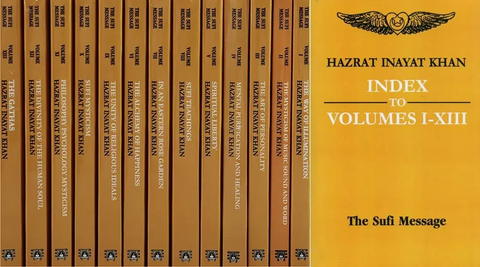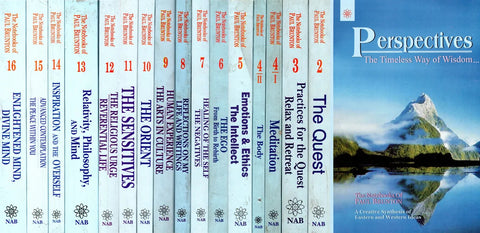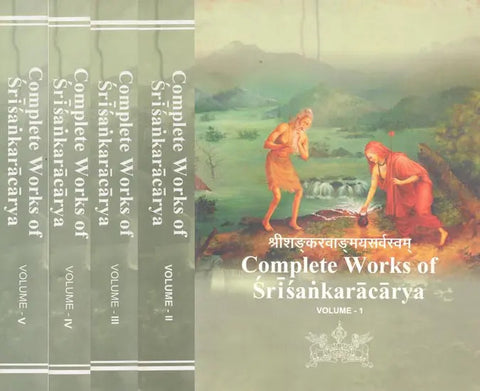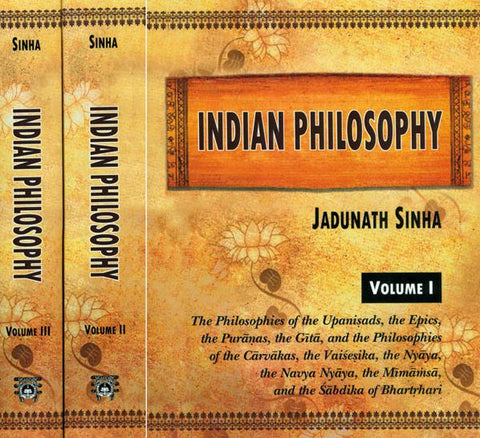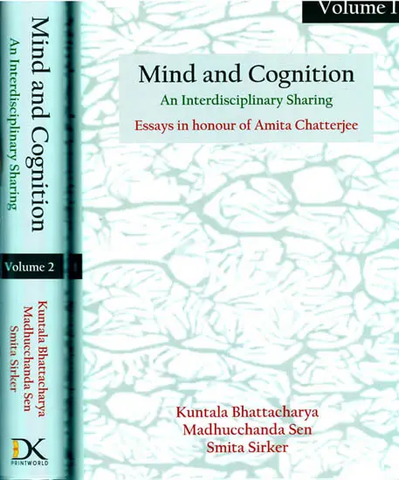Your cart is empty now.
The present publication, a unique one of its kind, is being released for the benefit of the students of Vedanta, who are in the initial stages of their course of studies and who are supposed to acquire a non-technical knowledge of the philosophy of the great doctrine of the unity of God, world and soul gradually getting revealed in systematic degrees of perception. A readable English translation of this original Sanskrit, known as the 'Laghuvasudevamanana' has not been published so far, to our knowledge, except one which is now out of print. The need for a new translation of the treatise was keenly felt at the Ashram's Headquarters, when Sri Swami Tejomayanandaji Maharaj of the Ashram commenced his discourses on the theme of this book and student found it necessary to have a guide to follow the line of the teaching. With this end in view, Swamiji has taken the pains of translating the Text unabridged, in an easy style suitable for beginners.
We introduce this valuable hand-book on the Vedanta to all those who are anxious to gain an access into the portals of the Ancient Wisdom of India.
28.4-1999
-THE DIVINE LIFE SOCIETY
Preface:
'An introduction to Advaita Vedanta Philosophy' is the title under which the metaphysics of Vedanta is treated here. This is an easy rendering into English of the Prakarana-Grantha called 'Laghuvasudevamanana', which is a brief exposition of the larger work called 'Vasudevamanana' in Sanskrit. The details of the life of the author of this work are lost in obscurity. The treatise gives an easy introduction and an immense inspiration to the study of Advaita Vedanta. It is considered by scholars as a standard compendium on Advaita Philosophy. An English rendering of such an important treatise was not available to the English-knowing students for quite a long time. The necessity was keenly felt by me when I had the opportunity to take up a regular class on Vedanta for the benefit of beginners with this "Laghuvasudevamanana' as the Text-Book, which resulted in the present publication.
Gurudev Swami Sivanandaji Maharaj says;
"Vedanta is a most practical subject. It is not the imagination of a dreamer. Even a little understanding of Vedanta, a little practice regularly and systematically done, and a humble attempt to live in the spirit of Vedanta will obviate great fears and bring in tremendous inner spiritual strength, unalloyed felicity, Self-bliss, infinite, supersensual, intuitional knowledge and immortality...Vedanta is Brahma-Vidya. It is Moksha-Sastra or the Science of Emancipation. Vedanta reveals the majesty of man in his essential nature. The oneness of all existence is the message which Vedanta teaches. Vedanta is the basic culture of India. It is the national philosophy of India. It is the summit or peak or acme of Indian Philosophy. It has kept Hindu Society alive for the past eight thousand years..."
The system of thought characterising the Upanishads or the concluding portion of the Vedas is known as 'Vedanta'. It is a philosophy in the sense that it makes an inquiry into the Truth; but unlike pure speculation, the truth it reveals is not a theory liable to modification with the advancement of scientific knowledge, but is positive and ultimate, verified and verifiable. It avails itself of all the sources of knowledge, viz., Sruti, Yukti and Anubhava, and includes all states and conditions through which life passes or is supposed to pass.
The system adopted in this work is the method of deduction, is the first postulate and all principles are deduced therefrom. All the oriental philosophers are at one in maintaining that the Absolute is the one essence or substratum of things, known and unknown. Therefore, the author, while treating of creation or evolution in the first chapter, begins with Para Brahman as the first postulate, being but the one Principle into which the countless universes of the past had merged before the present cosmos started off its primordial latency in the one Reality. This also explains the simile in the treatise how the eternal Jivas existed in the Absolute during Pralaya, like the particles of gold in a ball of wax. Moreover, the philosophy of creation as given out by the author, besides referring to the evolution of the present universe, may also be taken as an abstract formula referring to all universes, past and future.
The author discusses in detail, in twelve Varnakas or chapters, the nature of the Atman or the Self and tries to remove confusions and mistaken identities. The characteristics of the three bodies, the three states, and the five sheaths are described, and the Atman is shown as being different from them. In the end, it has also been proved that the essential nature of the Atman, viz., Sat-Chit-Ananda, does not constitute three different qualities but one single indivisible homogeneous essence.
To facilitate quick and easy understanding, pictures, diagrams and charts are included wherever necessary and feasible. An English translation of 'Tattva-Bodha' of Bhagavan Sankaracharya is also given at the commencement of the text, which will serve as a mini-encyclopaedia of Vedanta and prepare the student to get himself ready to enter into the text-book proper. At the end of the text, an appendix containing some questions and answers under the title 'Vedanta-bodha' of Sri Swami Sivanandaji Maharaj, and a glossary are also added for the benefit of the readers.
It is my firm conviction that this publication will serve as a handbook on Vedanta to sincere seekers of knowledge and induce them to enter into the subject deeply, and ultimately realise the Great Goal.
I am grateful to the great souls H. H. Sri Swami Chidanandaji Maharaj and H. H. Sri Swami Krishnanandaji Maharaj for their encouragement given to me from time to time. The readers are indebted to Mme. Simonetta d' Cesero of Paris, France, whose magnanimous help made this work find the light of the day. I am also thankful to my Gurubhais Sri Swami Brahmanandaji, Sri Swami Rajarajeswaranandaji and Sri Venugopalji for their valuable help in the form of manuscripts-correction, drawing the beautiful diagrams and the cover design, respectively.
Swami Tejomayananda
Sivanandashram,
The Divine Life Society H.Q.
22nd June, 1972
Salutations to Adi-Guru Bhagavan Narayana, to Jagadguru Sri Adi Sankaracharya and to our worshipful Sadguru SRI SWAMI SIVANANDAJI MAHARAJ, whose grace and blessing be upon the revered Swami Tejomayananda Saraswati whose learned lectures in English upon the Vedantic text LAGHUVASUDEVAMANANA, which is an INTRODUCTION TO VEDANTA PHILOSOPHY; form the highly illuminating and instructive contents of this book. These lectures form a most excellent and a very. helpful preparation for the students of Vedanta to take up the study of higher texts. Swami Tejomayanandaji's explanations and comments are unique in their novel presentation of the subject in their modern style of exposition as well as the graphic visual manner adopted to bring out the meaning of subtle points through apt illustrations during the course of his lectures. This book has become most valuable by the inclusion of these charts. The artist who collaborated . with Swami Tejomayanandaji by doing these nice drawings under his instructions is Sri Swami Rajarajeshwaranandaji, who deserves our congratulations for this valuable contribution to the book.
At the same time, all praise for this publication must certainly go to one of Swami Tejomayanandaji's most diligent and serious students, namely Madame Simonetta of Paris, France, who attended some of these lectures in March 1971. Mme. Simonetta carefully took down notes of his class lectures and as a gesture of her gratitude for the wisdom she had received from the teacher, she prepared the matter in a manuscript form when she went back to France.' She enthusiastically took up the idea of bringing this matter into a book form so that numerous seekers and students of Vedanta may be benefited by it. Thus for the publication in book form of this work, Mme. Simonetta is wholly responsible. She enthused the Swamiji to go through her manuscript, correct the entire matter, edit it and to do all that was necessary to make it ready for the Press. Mme. Simonetta is so very much interested in bringing this valuable knowledge of Vedanta into the easy reach of her own French brethren that she has got this matter translated into French and this Manuscript is ready for the Press. She has proved a worthy student of a worthy and excellent teacher. Through her effort, the true teaching of pure Vedanta is made available to seekers in the Western world. Yoga has become the modern fashion and craze in the West nowadays and it is time that some pure Vedanta is propagated there as this will help in bringing about a correct perspective into their lives and imparting to them an adequate measure of the higher spiritual quality to it. This would serve to bring about the desired balance between the outer physical and the inner spiritual aspects of their lives.
I wish this book wide circulation and serious reading by maximum number of seekers and Sadhakas of the East as well as the West. God bless you all. Let the Light of Vedanta shine!
| Page | ||
| Publishers' Note | vii | |
| Foreword (H. H. Sri Swami Chidananda) | viii-ix | |
| Preface | x-xii | |
| Tattva Bodha | xx-xxix | |
PROLEGOMENA |
||
| Ideals of life-Superimposition-Potential Matter-Material cause-Instrumental cause-Creation of the universe-Causal universe-Subtle universe-Gross Universe-Quintuplication-Samashti-Vyashti-Trinities-Veiling power-Mediate and immediate knowledge-Seven stages for liberation-De-Superimposition. | 1-9 | |
ANUBANDHA-CHATUSHTAYA AND SADHANA-CHATUSHTAYA |
||
| Indispensable requisite of a Text-Fourfold qualifications of a student of Vedanta-Discrimination-Dispassion-Sixfold virtues-Intense aspiration for liberation-Necessity for a Guru. | 11-13 | |
ATMAN AND ANATMAN |
||
| Divisions of the universe-One single Reality appears as many-Doctrine of limitation of Consciousness-Doctrine of reflection of Consciousness-Identity between the individual soul and the Supreme Soul-Three kinds of individual souls | 14-18 | |
CHAIN OF BONDAGE-I-PAIN AND EMBODIMENT |
||
| Seven links of the chain of bondage-Pain is not natural to the Soul-Embodiment is the cause of suffering-Existence of pain even in emperors and celestials-Pain alone appears as pleasure-Difference between a man of discrimination and an ignorant person-Proofs to show pain is not natural to the Self-Four varieties of liberation-Sadhana for their attainment-Jivanmukti and Videhammukti-Deep sleep and deluge are not liberation-Cause of embodiment is Karma-Annihilation of Karma through knowledge. | 19-32 | |
CHAIN OF BONDAGE-II-ACTION, LOVE AND HATRED |
||
| Divisions of Karmas-Effect of the three kinds of meritorious actions-Effect of the three kinds of sinful actions-Effect of the three kinds of mixed actions-Cause of Karma is the three instruments-Self is not the doer of actions-Three kinds of mental actions-Three kinds of verbal actions-Three kinds of physical actions-Benefits of the enquiry into the nature of actions-Four kinds of knowers of Brahman-Description of mental modifications-Attraction and repulsion are the cause for the actions of the three instruments-Self is not the impeller also-Attraction and repulsion alone are the impellers of actions-Self is not related to the fruit of actions-Three kinds of obstructions to the attainment of knowledge-Methods to remove the obstructions-Shad Lingas-Seven kinds of Arthavadas. | 33-47 | |
CHAIN OF BONDAGE-III-LOVE AND HATRED, SELF-IDENTIFICATION, NON-DISCRIMINATION AND IGNORANCE |
||
| Sixteen kinds of modifications of the Antahkarana-Benefit of their study-Abhimana is the cause of non-discrimination-Beginningless Ignorance has an end-Definition of Ignorance-Knowledge alone is the means for the destruction of Ignorance-Two kinds of knowledge-Annihilation of Ignorance through Vritti- Jnana-Annihilation of Vrittis | 48-62 | |
SELF-KNOWLEDGE |
||
| Discrimination between the Self and the non-Self-Definition of the Self-Definition of the non-Self-Difference between Vyashti and Samashti-Definition of Isvara and Jiva-Indweller-Hiranya-garbha-Virat-Worship of the Trinities-Idol-worship-Prajna, Taijasa and Visva-Three kinds of relation in the Mahavakya-Three kinds of Lakshanas-Vachyartha and Lakshyartha-Akhandartha. | 63-76 | |
THE SELF IS SEPARATE FROM THE THREE BODIES |
||
| The Self is separate from the three bodies-Three kinds of bodies-Definition of gross body-Seventeen limbs of the subtle body-Three means of knowing an object-Three kinds of fault-Definition of five senses of knowledge-Definition of five organs of actions-Definition of five Pranas Definition of Atman-Five kinds of differences between the Self and the non-Self-Differences between Chit and Jada-Difference between Ananda and Duhkha-Three kinds of afflictions. | 77-91 | |
SELF IS THE WITNESS OF THE THREE STATES |
||
| The Self is the witness of the three states-Three Gunas of the mind-Three states-Illustration to show the witness nature of the Self-Difference between the Witness and the Chidabhasa-The Self is not the known-Illustration of the missing tenth person-The Self is not to be understood through proofs. | 92-99 | |
THE SELF TRANSCENDS THE FIVE SHEATHS |
||
| What are the five sheaths?-The Self transcends the five sheaths-Non-attached state of the Self with the five sheaths-False superimposed relationship of the Self with the five sheaths-Superimposition of the Self on the food, vital, mental, intellectual and bliss sheaths-Non-discrimination is the cause of superimposition-Five sheaths-Three kinds of realities. | 100-107 | |
THE SELF IS SAT-CHIT-ANANDA |
||
| The Self is Sat-Chit-ananda-Proofs to the Sat nature of the Self-The Self is of the nature of Chit-The Ananda nature of the Self is proved. | 108-121 | |
THE SELF IS INDIVISIBLE ABSOLUTE |
||
| Proof to the indivisible nature of the Self-Indivisibility is free from the three kinds of limitations-The Self is free from the three kind of limitations-Sat-Chit-Ananda are not different from one another-knower of this indivisible | ||
| nature alone is a Jnani. | 122-131 | |
| I. | Vedanta Bodha (Sri Swami Sivananda) | 133 |
| II. | Thou Art The Tenth Person | 152 |
| III. | Chart showing the Categories of Vedanta or the Evolution of Consciousness |
|
Delivery and Shipping Policy
- INTERNATIONAL SHIPPING
- Rs.1000-1100/kg
- ESTD. Delivery Time: 2-3 weeks (depending on location)
- Bubble Wrapped with Extra Padding
- NATIONAL SHIPPING
- NCR: Rs. 30/half kg
- Standard: Rs. 80/half kg
- Express shipments also available on Request
- ESTD. Delivery Time: Ranging from 1-4 days up to 7 business days (Depending on your choice of Delivery)
- TRACKING
- All orders; national or international, will be provided with a Tracking ID to check the status of their respective orders
- Depending on the Shipping Service, Tracking ID may be used on their respective tracking portals
Frequently Asked Questions (FAQs)
Domestic Shipping: 3-4 Days (after shipping)
International Shipping: 1-2 weeks (based on your location)
You will receive an email once your order has been shipped or you can email us if you didn't receive tracking details (info@mlbd.co.in)
Every book that we sell is the latest edition except all the rare books
Yes, we do provide free shipping, only on domestic orders (within India) above Rs.1500





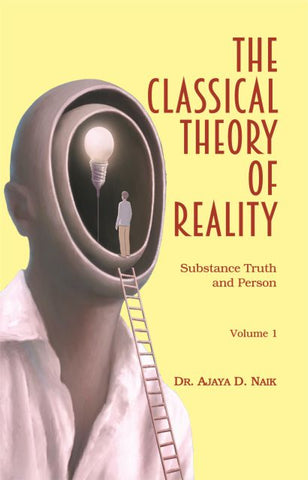
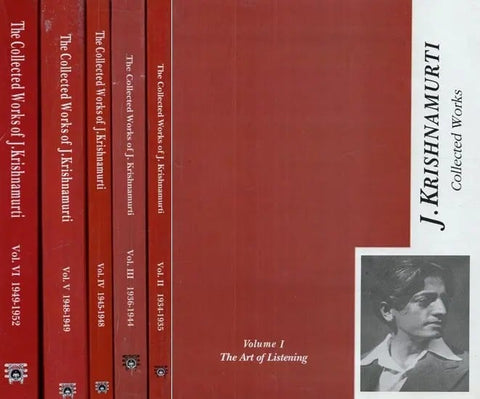

![A HISTORY OF INDIAN PHILOSOPHY [5 VOLUMES] by Surendranath Dasgupta](http://www.motilalbanarsidass.com/cdn/shop/products/HISTORYOFINDIANPHILOSOPHY_large.jpg?v=1675238163)
